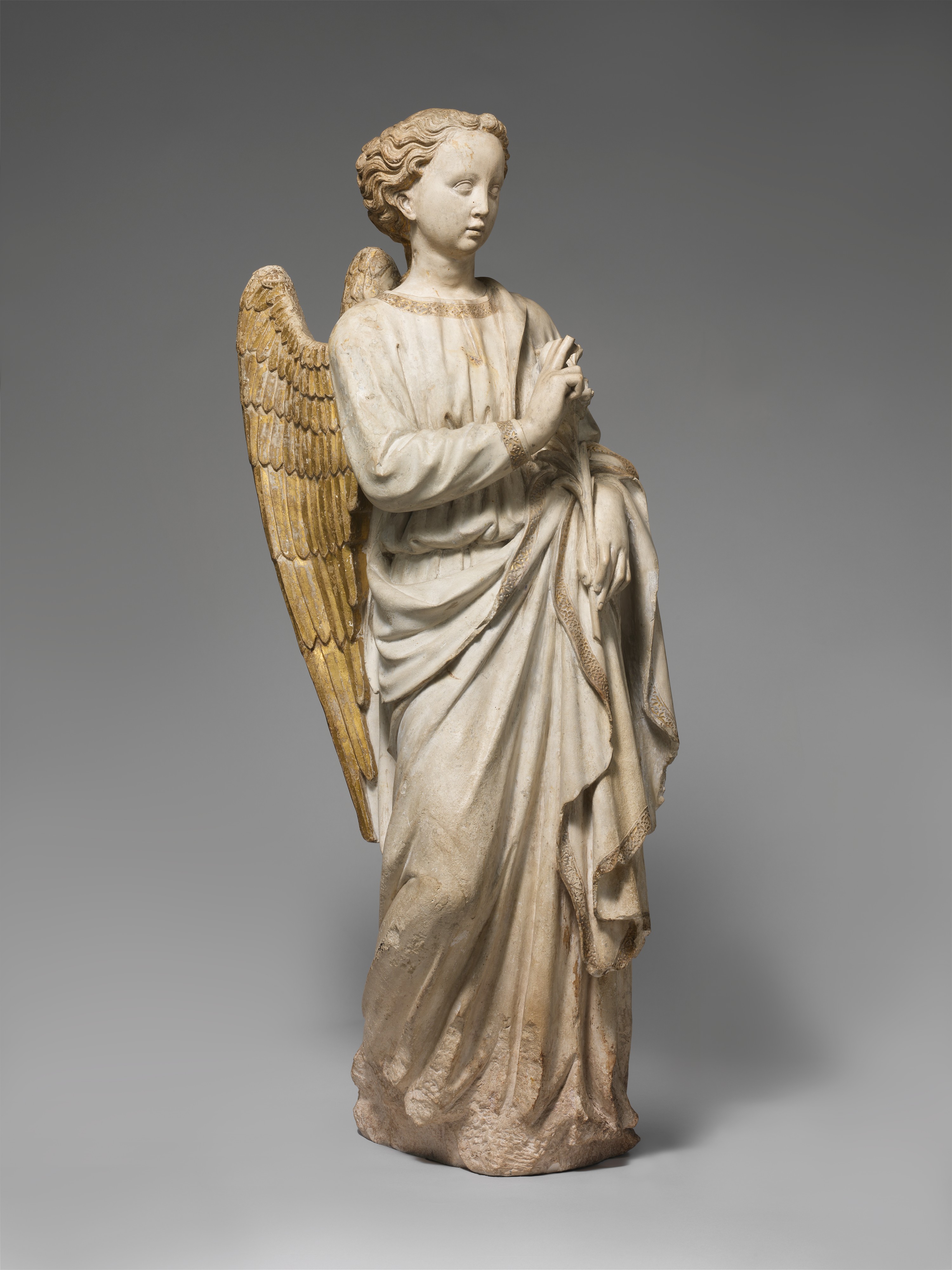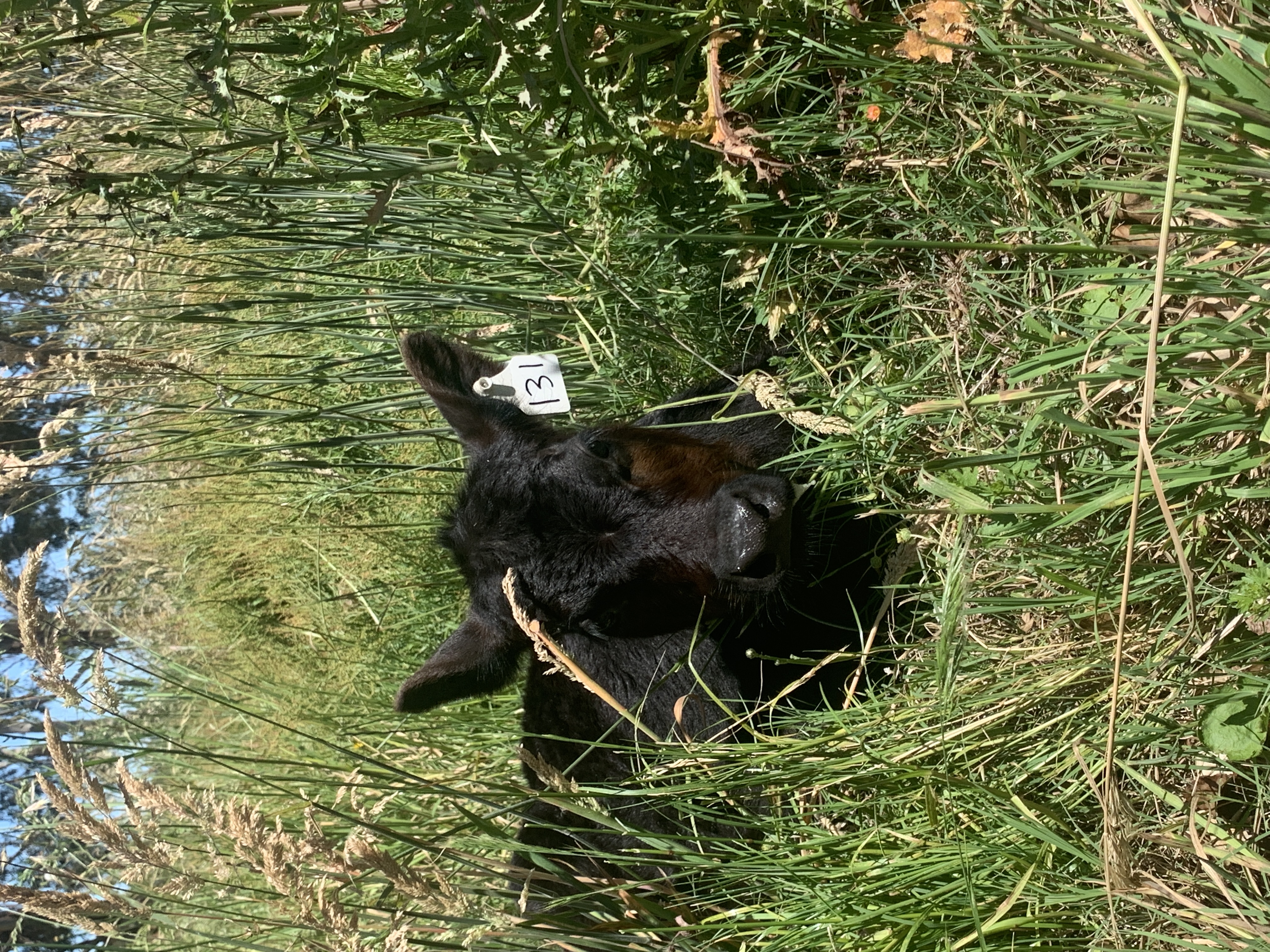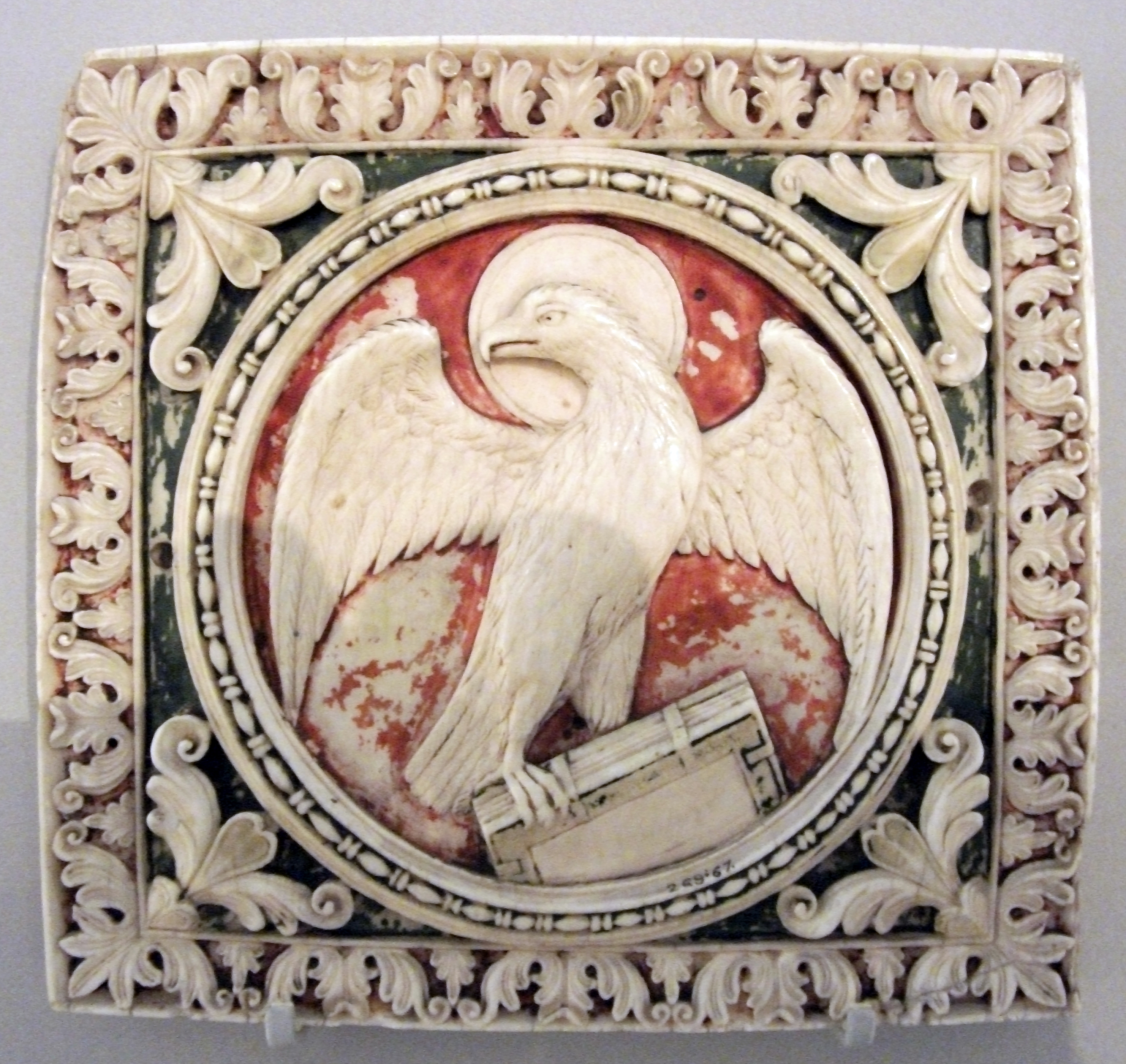|
Evangelist Portrait
Evangelist portraits are a specific type of miniature included in ancient and mediaeval illuminated manuscript Gospel Books, and later in Bibles and other books, as well as other media. Each Gospel of the Four Evangelists, the books of Matthew, Mark, Luke, and John, may be prefaced by a portrait of the Evangelist, usually occupying a full page. Their symbols may be shown with them, or separately. Often they are the only figurative illumination in the manuscript. They are a common feature in larger Gospel Books from the earliest examples in the 6th century until the decline of that format for illustrated books in the High Middle Ages, by which time their conventions were being used for portraits of other authors. Author portraits They originate in the classical secular tradition of the author portrait, which was often the only illustration in a classical manuscript, also used as a frontispiece (not unlike the contemporary author photo, though this is usually shown on t ... [...More Info...] [...Related Items...] OR: [Wikipedia] [Google] [Baidu] |
Chronography Of 354
The Chronograph of 354 is a compilation of chronological and calendrical texts produced in 354 AD for a wealthy Roman Christian named Valentinus by the calligrapher and illustrator Furius Dionysius Filocalus. The original illustrated manuscript is lost, but several copies have survived. It is the earliest known codex to have had full page illustrations. The work is also called the Chronography or Calendar of 354, and the name Calendar of Filocalus or Filocalian Calendar is sometimes used to describe the whole collection, and sometimes just the sixth part, which is the Calendar itself. Other versions of the names ("Philocalus", "Philocalian", "Codex-Calendar of 354", etc.) are occasionally used. The text and illustrations are available online. It has had a variety of other names over the years; the historian Theodor Mommsen titled it "Chronica urbis Romae". Amongst other historically significant information, the work contains the earliest reference to the celebration of Christ ... [...More Info...] [...Related Items...] OR: [Wikipedia] [Google] [Baidu] |
Old Testament
The Old Testament (OT) is the first division of the Christian biblical canon, which is based primarily upon the 24 books of the Hebrew Bible, or Tanakh, a collection of ancient religious Hebrew and occasionally Aramaic writings by the Israelites. The second division of Christian Bibles is the New Testament, written in Koine Greek. The Old Testament consists of many distinct books by various authors produced over a period of centuries. Christians traditionally divide the Old Testament into four sections: the first five books or Pentateuch (which corresponds to the Jewish Torah); the history books telling the history of the Israelites, from their conquest of Canaan to their defeat and exile in Babylon; the poetic and wisdom literature, which explore themes of human experience, morality, and divine justice; and the books of the biblical prophets, warning of the consequences of turning away from God. The Old Testament canon differs among Christian denominations. The Ea ... [...More Info...] [...Related Items...] OR: [Wikipedia] [Google] [Baidu] |
Patron Saint
A patron saint, patroness saint, patron hallow or heavenly protector is a saint who in Catholicism, Anglicanism, Eastern Orthodoxy or Oriental Orthodoxy is regarded as the heavenly advocate of a nation, place, craft, activity, class, clan, family, or person. The term may be applied to individuals to whom similar roles are ascribed in other religions. In Christianity Saints often become the patrons of places where they were born or had been active. However, there were cases in medieval Europe where a city which grew to prominence obtained for its cathedral the remains or some relics of a famous saint who had lived and was buried elsewhere, thus making them the city's patron saint – such a practice conferred considerable prestige on the city concerned. In Latin America and the Philippines, Spanish and Portuguese explorers often named a location for the saint on whose feast or commemoration day they first visited the place, with that saint naturally becoming the area's patron ... [...More Info...] [...Related Items...] OR: [Wikipedia] [Google] [Baidu] |
Venice
Venice ( ; ; , formerly ) is a city in northeastern Italy and the capital of the Veneto Regions of Italy, region. It is built on a group of 118 islands that are separated by expanses of open water and by canals; portions of the city are linked by 438 bridges. The islands are in the shallow Venetian Lagoon, an enclosed bay lying between the mouths of the Po River, Po and the Piave River, Piave rivers (more exactly between the Brenta (river), Brenta and the Sile (river), Sile). As of 2025, 249,466 people resided in greater Venice or the Comune of Venice, of whom about 51,000 live in the historical island city of Venice (''centro storico'') and the rest on the mainland (''terraferma''). Together with the cities of Padua, Italy, Padua and Treviso, Italy, Treviso, Venice is included in the Padua-Treviso-Venice Metropolitan Area (PATREVE), which is considered a statistical metropolitan area, with a total population of 2.6 million. The name is derived from the ancient Adr ... [...More Info...] [...Related Items...] OR: [Wikipedia] [Google] [Baidu] |
Angel
An angel is a spiritual (without a physical body), heavenly, or supernatural being, usually humanoid with bird-like wings, often depicted as a messenger or intermediary between God (the transcendent) and humanity (the profane) in various traditions like the Abrahamic religions. Other roles include protectors and guides for humans, such as guardian angels and servants of God. In Western belief-systems the term is often used to distinguish benevolent from malevolent intermediary beings. Emphasizing the distance between God and mankind, revelation-based belief-systems require angels to bridge the gap between the earthly and the transcendent realm. Angels play a lesser role in monistic belief-systems, since the gap is non-existent. However, angelic beings might be conceived as aid to achieve a proper relationship with the divine. Abrahamic religions describe angelic hierarchies, which vary by religion and sect. Some angels have specific names (such as Gabriel or Mich ... [...More Info...] [...Related Items...] OR: [Wikipedia] [Google] [Baidu] |
Calf (animal)
A calf (: calves) is a young domestic cow or bull. Calves are reared to become adult cattle or are slaughtered for their meat, called veal, and their Calfskin, hide. Terminology "Calf" is the term used from birth to weaning, when it becomes known as a ''weaner'' or ''weaner calf'', though in some areas the term "calf" may be used until the animal is a wiktionary:yearling, yearling. The birth of a calf is known as ''calving''. A calf that has lost its mother is an orphan calf, also known as a ''poddy'' or ''poddy-calf'' in British. ''Bobby calves'' are young calves which are to be slaughtered for human consumption. A ''vealer'' is a calf weighing less than about which is at about eight to nine months of age. A young female calf from birth until she has had a calf of her own is called a ''heifer'' (). In the American Old West, a motherless or small, runty calf was sometimes referred to as a dodie. Early development Calves may be produced by natural means, or by artificial ... [...More Info...] [...Related Items...] OR: [Wikipedia] [Google] [Baidu] |
Eagle Of Saint John
The Eagle of Saint John () is a heraldic eagle associated mostly with the Catholic Monarchs which was later used during Francoist Spain (1938–1977) and the Spanish transition to democracy (1977–1981). It is sable with an or halo and feet of gules. Symbol of John the Evangelist John the Evangelist, the author of the fourth gospel account, is symbolized by an eagle, often with a halo, an animal may have originally been seen as the king of the birds. The eagle is a figure of the sky, and believed by Christian scholars to be able to look straight into the sun. It appears with other three beings as the tetramorph, interpreted in Christianity as symbols of the evangelists. The four beings appear as the living creatures in the Bible. Use by Isabella I of Castile The better known heraldic use of the Eagle of St. John has been the single supporter chose by Queen Isabella of Castile in her armorial achievement used as heiress and later integrated into the heraldry of the Catholic ... [...More Info...] [...Related Items...] OR: [Wikipedia] [Google] [Baidu] |
Lion Of Saint Mark
The Lion of Saint Mark, representing Mark the Evangelist, pictured in the form of a winged lion, is an aspect of the Tetramorph. On the pinnacle of St Mark's Cathedral he is depicted as holding a Bible, and surmounting a golden lion which is the symbol of the city of Venice and formerly of the Venetian Republic. It is also found in the symbol of the Greek Orthodox Patriarchate of Alexandria. It appears in both merchant and military naval flags of the Italian Republic. The Lion of Saint Mark is also the symbol of the award of the Venice Film Festival, the "Golden Lion", and of the insurance company Assicurazioni Generali. Symbolism The representation as a lion is derived from Mark's description of John the Baptist as "...The voice of the one who cries in the wilderness: Prepare Ye the way of the Lord, make straight his paths", which artists compared to a roaring lion. The wings come from Ezekiel 1:10 and the application of the prophet's vision of four winged creatures to th ... [...More Info...] [...Related Items...] OR: [Wikipedia] [Google] [Baidu] |
Insular Art
Insular art, also known as Hiberno-Saxon art, was produced in the sub-Roman Britain, post-Roman era of Great Britain and Ireland. The term derives from ''insula'', the Latin language, Latin term for "island"; in this period Britain and Ireland shared a largely common style different from that of the rest of Europe. Art historians usually group Insular art as part of the Migration Period art movement as well as Early Medieval Western art, and it is the combination of these two traditions that gives the style its special character. Most Insular art originates from the Hiberno-Scottish mission, Irish monastic movement of Celtic Christianity, or metalwork for the secular elite, and the period begins around 600 with the combining of Celtic art, Celtic and Anglo-Saxon art, Anglo-Saxon styles. One major distinctive feature is interlace (art), interlace decoration, in particular the interlace (visual arts), interlace decoration as found at Sutton Hoo, in East Anglia. This is now appli ... [...More Info...] [...Related Items...] OR: [Wikipedia] [Google] [Baidu] |
Roman Theatre (structure)
Roman theatres derive from and are part of the overall evolution of earlier Ancient Greek theatre (structure), Greek theatres. Much of the architectural influence on the Romans came from the Greeks, and theatre structural design was no different from other buildings. However, Roman theatres have specific differences, such as generally being built upon their own foundations instead of earthen works or a hillside and being completely enclosed on all sides. Architecture Roman theatres were built in all areas of the Roman Empire, Empire, from Spain to the Middle East. Because of the Romans' ability to influence local architecture, we see numerous theatres around the world with uniquely Roman attributes. Similarities exist between the theatres and Roman amphitheater, amphitheaters of ancient Rome. They were constructed out of the same material, Roman concrete, and provided a place for the public to go and see numerous events. However, they are two entirely different structures, with ... [...More Info...] [...Related Items...] OR: [Wikipedia] [Google] [Baidu] |









